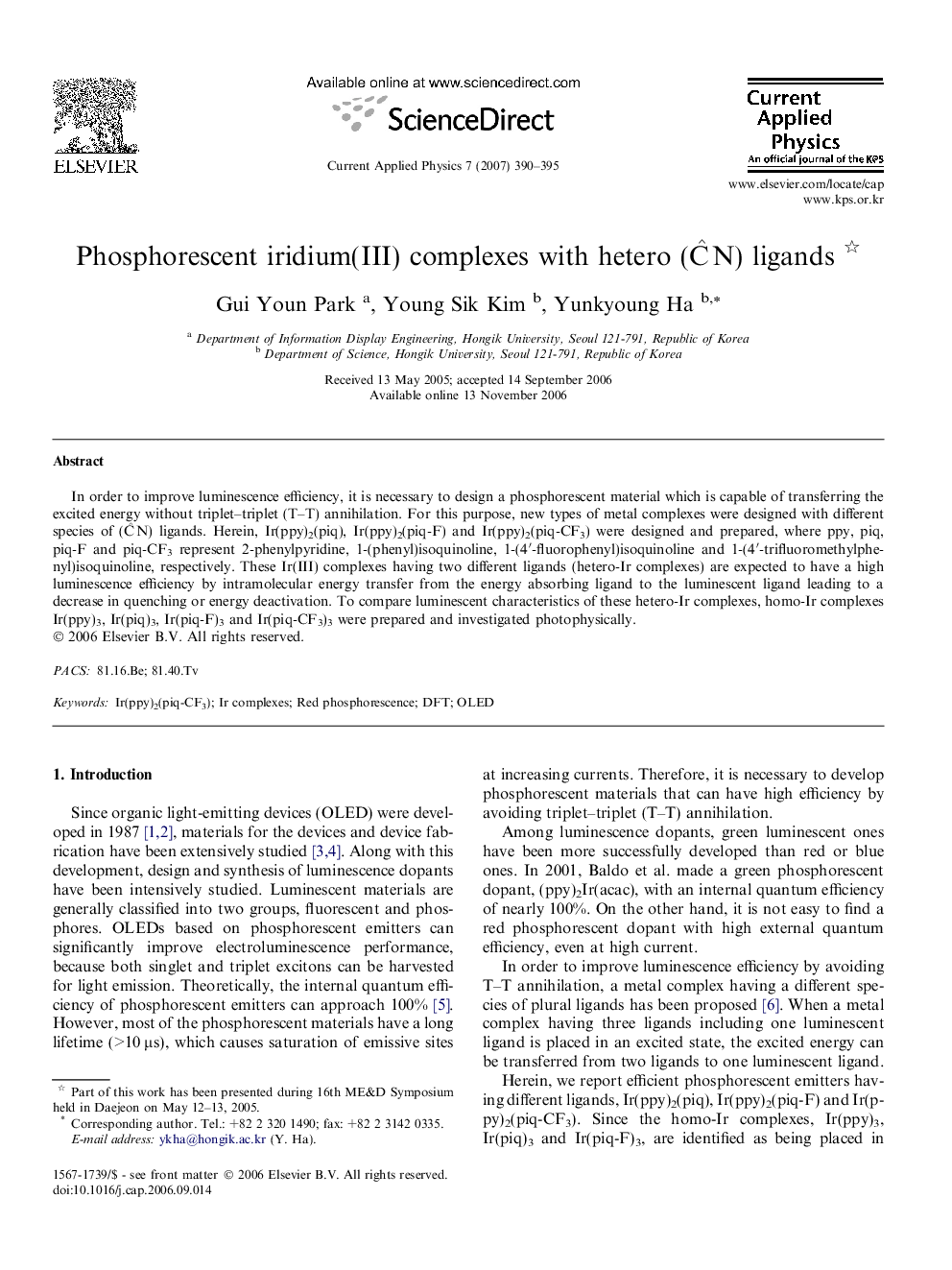| Article ID | Journal | Published Year | Pages | File Type |
|---|---|---|---|---|
| 1787411 | Current Applied Physics | 2007 | 6 Pages |
In order to improve luminescence efficiency, it is necessary to design a phosphorescent material which is capable of transferring the excited energy without triplet–triplet (T–T) annihilation. For this purpose, new types of metal complexes were designed with different species of (C ˆN) ligands. Herein, Ir(ppy)2(piq), Ir(ppy)2(piq-F) and Ir(ppy)2(piq-CF3) were designed and prepared, where ppy, piq, piq-F and piq-CF3 represent 2-phenylpyridine, 1-(phenyl)isoquinoline, 1-(4′-fluorophenyl)isoquinoline and 1-(4′-trifluoromethylphenyl)isoquinoline, respectively. These Ir(III) complexes having two different ligands (hetero-Ir complexes) are expected to have a high luminescence efficiency by intramolecular energy transfer from the energy absorbing ligand to the luminescent ligand leading to a decrease in quenching or energy deactivation. To compare luminescent characteristics of these hetero-Ir complexes, homo-Ir complexes Ir(ppy)3, Ir(piq)3, Ir(piq-F)3 and Ir(piq-CF3)3 were prepared and investigated photophysically.
